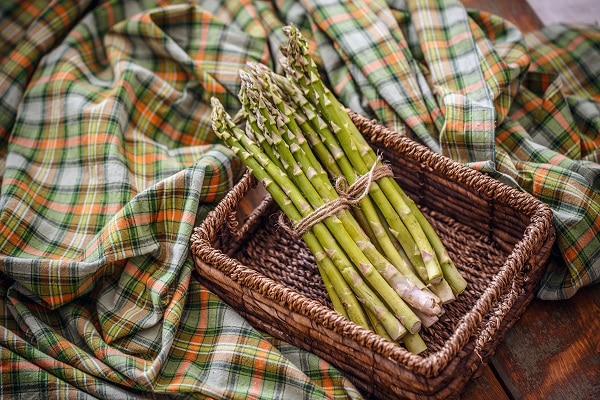If you have spent time in a garden, you know that all plants have a unique set of needs and a unique look. Whether it is how they receive nutrients or how they look once they have reached full bloom, all plants you come across need to be taken care of in one way or another. And for some plants, one major element of that care is pruning! So to help you establish which ones, this article will look at some of the plants that need pruning!
Contents
How The Process Of Pruning Works
Pruning is essential to caring for plants, as it helps keep them healthy, strong, and in proper balance. This process involves removing unnecessary or dead branches from the plant to help it regulate growth and strength. Pruning also helps minimize pests and diseases by cutting off infected branches and encouraging new growth, resulting in a stronger, healthier plant. Knowing how much pruning is right for each particular species can be challenging, so it’s essential to research ahead of time or seek experienced advice before making any changes.
Working with an experienced arborist allows one to learn the most efficient way of properly pruning plants and what tools are needed. Maximizing the benefits of pruning while still keeping the plant safe requires thoughtful consideration; though it can be tedious work, taken seriously, it can lead plants to great heights!
Tomatoes
Tomato plants must be regularly pruned to maximize their yield, harvest quality, and overall health. By removing excess leaves and stems, tomato plants can focus their energy on producing fewer but more flavorful fruits. Pruning also ensures adequate airflow and sun exposure for the plant; this helps the plant manage humidity levels and stimulates the production of vitamins and minerals essential to growth.
Furthermore, by pruning off any diseased or damaged foliage, gardeners can help prevent infection or infestation throughout the rest of their garden, which can be especially important as tomatoes are susceptible to various pests and diseases.
Rose Bushes
Pruning helps control the overall size of a rose by removing dead or damaged stems and branches, allowing new growth and buds to emerge. Additionally, pruning can help prevent the spread of disease by removing any infected plant tissue. Another common plant that benefits from regular pruning is the rose bush.
To prune rose bushes, gardeners should first be familiar with how a healthy rose bush looks and feels. By doing this, they can better identify areas that need to be removed or trimmed to best maintain overall health and quality. And with regular pruning, your rose bushes can stay strong and beautiful, providing blooms year after year!
Squash
Pruning is essential for those growing squash plants to keep them looking healthy and attractive. Squash plants tend to be very big and sprawling, so they must be pruned regularly to keep the plant’s overall size in check. Additionally, squash plants benefit from regular pruning because this can help reduce the risk of insects or diseases.
Removing dead leaves, stems, and flowers help to improve air circulation and reduce the risk of fungal growth that can be dangerous for plants. Plus, as squash are known to be very prolific growers, which can cause problems with overcrowding, pruning can help to limit the number of fruits produced and make for a more manageable plant overall.
Butterfly Bush
Butterfly bush plants are beautiful in any garden and make a vibrant focal point for passersby. The biggest reason they need to be pruned is to maintain their beauty and health. Not pruning the butterfly bush can cause the spreading of diseases, weakening of the stem, and slower growth. Another benefit of pruning is that it helps control the size and shape of the plant by removing dead or diseased branches and cutting back on overgrown stems of old flowers, allowing more sun exposure during spring growth.
This will help promote better flowering of new blooms and ultimately provide a healthier butterfly bush plant with a longer life span. Pruning also encourages new buds to form, resulting in fuller blooms with abundant clusters of color all summer long!
Begonias
Pruning begonias encourages healthy bushy growth that comes with strong stems and vivid foliage; this allows your begonia to adequately support its flowers and display its beauty. Begonias are truly unique plants, sporting beautiful colors and intricate patterns. However, like all the other plants on this list, you must prune them regularly. Neglecting this care can cause them to become overcrowded and weak.
Pruning also helps promote the development of a good root system so that the overall health of your begonias improves substantially. Taking the time to prune your begonia regularly is beneficial in numerous ways, as it will leave you with a stunning plant for years to come.
Asparagus
Asparagus plants are a popular vegetable amongst home gardeners due to their hardiness and ease of growth. As with many plants, however, asparagus requires pruning to receive the greatest possible yield from its harvesting season. Pruning is necessary for several reasons: it encourages new shoot growth, reduces overcrowding and competition between shoots for nutrients and light, and helps prevent disease spread.
When pruning your asparagus, it is essential to remove older and less productive stalks and allow them to be rejuvenated by the new growth that will emerge in their place. This process can help you achieve a greater yield from your asparagus plants and ensure years of healthy vegetable production for your garden.
Be Aware Of The Different Plants That Need Pruned!
Pruning is essential to keep these plants healthy and vibrant, whether a beautiful rose bush or asparagus plant. Ultimately, pruning is necessary to promote healthier, more vigorous growth and encourage a greater yield of delicious fruits and vegetables. So if you want your plants to flourish, remember to prune regularly! Knowing which plants need pruning and when is essential to gardening and caring for these beautiful plants.





